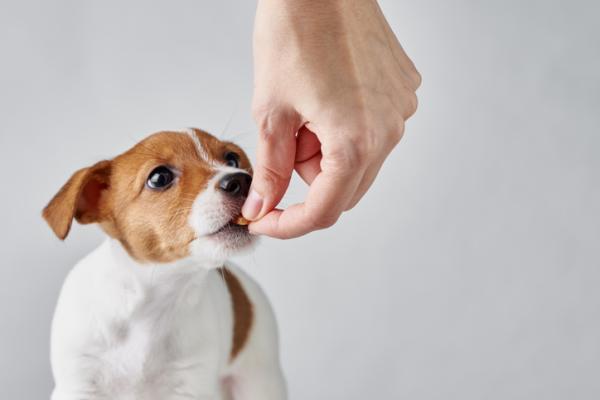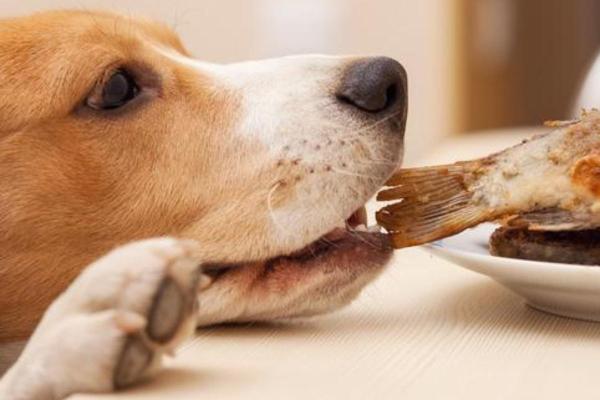Vitamin D in Dogs - Usage, Dosage and Toxicity



See files for Dogs
Vitamin D is an essential and fundamental vitamin for numerous functions in a dog's body. It is particularly useful in synthesizing other vitamins as it helps to address the balance of calcium and phosphorus in the bones. It also affects the function of the kidneys and parathyroid gland, as well as bone mineralization, among others. You may be aware that humans can metabolize vitamin D through the sun's rays, but this is not possible with dogs. This means they need to synthesize vitamin D from their diet.
At AnimalWised, we look at vitamin D in dogs. We look at the uses of vitamin D for dogs in their body, as well as the dosage you should give your dog, how we give vitamin D to dogs and what happens if you give too much. For the latter, we will look at the possible side effects when we see vitamin D toxicity in dogs.
What is vitamin D?
Vitamin D is a key nutrient for regulating the balance and assimilation of phosphorus and calcium. It is a vitamin that is soluble in fat, but not in water. If a dog ingests more vitamin D than necessary, it accumulates in the body (liver and fatty tissue) as it is unable to be eliminated through urine. This excess of vitamin D can be toxic and threaten the dog's life due to kidney failure. Vitamin D toxicity in dogs can be fatal.
In humans and other animal species, the synthesis of vitamin D begins with exposure to the sun through the skin. This occurs by transforming 7-dehydrocholesterol into provitamin D3, but dogs cannot synthesize it in sufficient quantities. This is possibly due to increased activity of Δ7-dehydrocholesterol reductase.
For this reason, dogs require another route to obtain a sufficient amount of vitamin D. It must be supplied through animal-derived food (cholecalciferol or vitamin D3) or vegetables (ergocalciferol or vitamin D2), although nutritional supplements are available.
Uses of vitamin D in dogs
Vitamin D in dogs has multiple functions, but we need to highlight its function of creating homeostasis (balance) between calcium and phosphorus. It does so through the axis established between the bones, the parathyroid gland and the kidney, favoring its reabsorption and avoiding loss.
Vitamin D is also involved in bone remodeling and mineralization. Forming bones is key to skeletal development. It also acts on the cells of the small intestine, favoring the absorption of calcium and phosphorus that will pass on to the bones.
This vitamin is also involved in the differentiation immune system cells. It does so by promoting the passage of monocytes to macrophages, aiding hematopoiesis (formation of blood cell components) and stimulating insulin secretion, as well as reduction of proteinuria and inflammation.
If your dog does not get enough vitamin D, it means these processes will be lacking in their organism. Vitamin D deficiency can lead to demineralization, weakening and curvature of bones, potentially leading to irreversible malformations, rickets in puppies or osteomalacia in adults. In these cases, you will need to look for signs of vitamin D deficiency in dogs which can include:
- Changes to gait
- Incoordination
- Muscle pain
- Lethargy
- Heart failure
- Hair loss
- Weakened immune system
If you see these symptoms of canine vitamin D deficiency, you should speak to a veterinary consultant. Learn more about what to look out for with our article on signs of congestive heart failure in dogs.
Dosage of vitamin D in dogs
Dogs require a minimum daily dose of 227 IU per kilogram of dry food. Doses of more than 2,700 IU/kg of body weight are considered toxic, being well above the safety limit in dogs.
Dogs can also convert vitamin D in the most superficial layers of the skin, although they do it to a much lesser extent than animals of other species. However, the consumption of dry feed or other foods rich in vitamin D will cover their needs and help to avoid deficiencies.
Once absorbed, vitamin D arrives through the lymphatic system and the portal system to the liver. For this process, it is necessary to activate chylomicrons, digestive enzymes, bile acids, transcalciferins and vitamin D binding proteins.

How to give vitamin D to my dog
A dog with the correct diet based on the consumption of a dry feed for the canine species should not have problems with vitamin D deficiency.
If a dog does not have a correct diet or their diet is based on the consumption of too many vegetables, it is likely that it will develop a deficiency of this vitamin. For plants to obtain vitamin D it is necessary that they be dried in the sun. This often happens with caregivers who want to provide their dog with a vegetarian or vegan diet, something which requires the use of vitamin supplements to obtain the necessary dose of vitamin D for dogs.
Foods for human consumption such as egg yolks, butter, kidneys, fatty fish and cod liver oil are also sources of vitamin D for dogs. Find out more with our article on omega-3-rich foods for dogs.
Vitamin D toxicity in dogs
Although dogs require vitamin D through diet in order to synthesize to vitamin D3, they can be given too much. This occurs when guardians give the dog vitamin D supplements without consulting their veterinarian. It is especially worrying if they give the dog vitamin D supplements designed for human consumption. This can lead to vitamin D hypervitaminosis, i.e. vitamin D toxicity in dogs. This process can manifest in the following clinical symptoms:
- Vomiting
- Poor appetite
- Weight loss
- Increased urge to drink and urinate
- Hypersalivation
This is due to the fact that vitamin D accumulates in the dog's liver and adipose tissue as it cannot eliminate excess vitamin D through urine.

Contraindications of vitamin D in dogs
The main contraindication to the use of vitamin D in dogs is to offer supplementation to dogs whose diet is already sufficiently complete. When a dog is a complete food for the canine species that contains adequate levels of this vitamin, they do not need any more. Excess vitamin D is toxic to the dog and accumulates in its organic tissues, causing the serious symptoms described above.
If you think your dog is suffering from a vitamin D deficiency, you need to take your dog to a veterinarian. They will be able to determine the cause of physical or behavioral changes. If they do see a lack of vitamin D, they can prescribe supplements, but it is the vet who will determine the type, dosage and length of administration. Do not give your dog supplements without consulting a veterinary professional beforehand.
Discover more about other types of supplements for dogs with our article on vitamin B complex for dogs.

If you want to read similar articles to Vitamin D in Dogs - Usage, Dosage and Toxicity, we recommend you visit our Healthy diets category.
1. Elices., R. (2010). Atlas of Nutrition and Practical Feeding in Dogs and Cats. Servetus.
2. Aveaca. (201). Nutritional requirements in dogs and cats. Retrieved from:
https://aveaca.org.ar/wp-content/uploads/2019/03/Nutrición-Seccion-02.pdf







